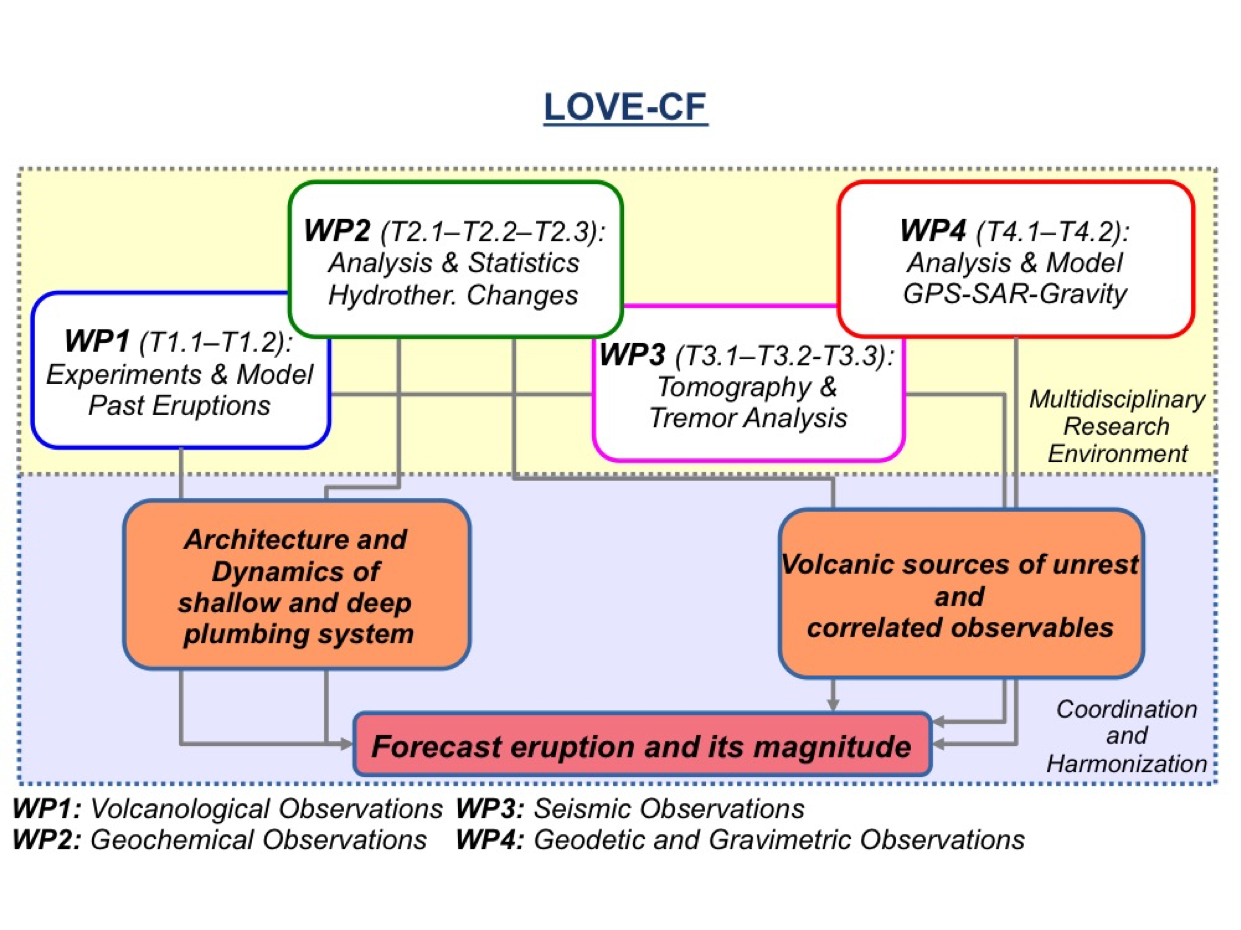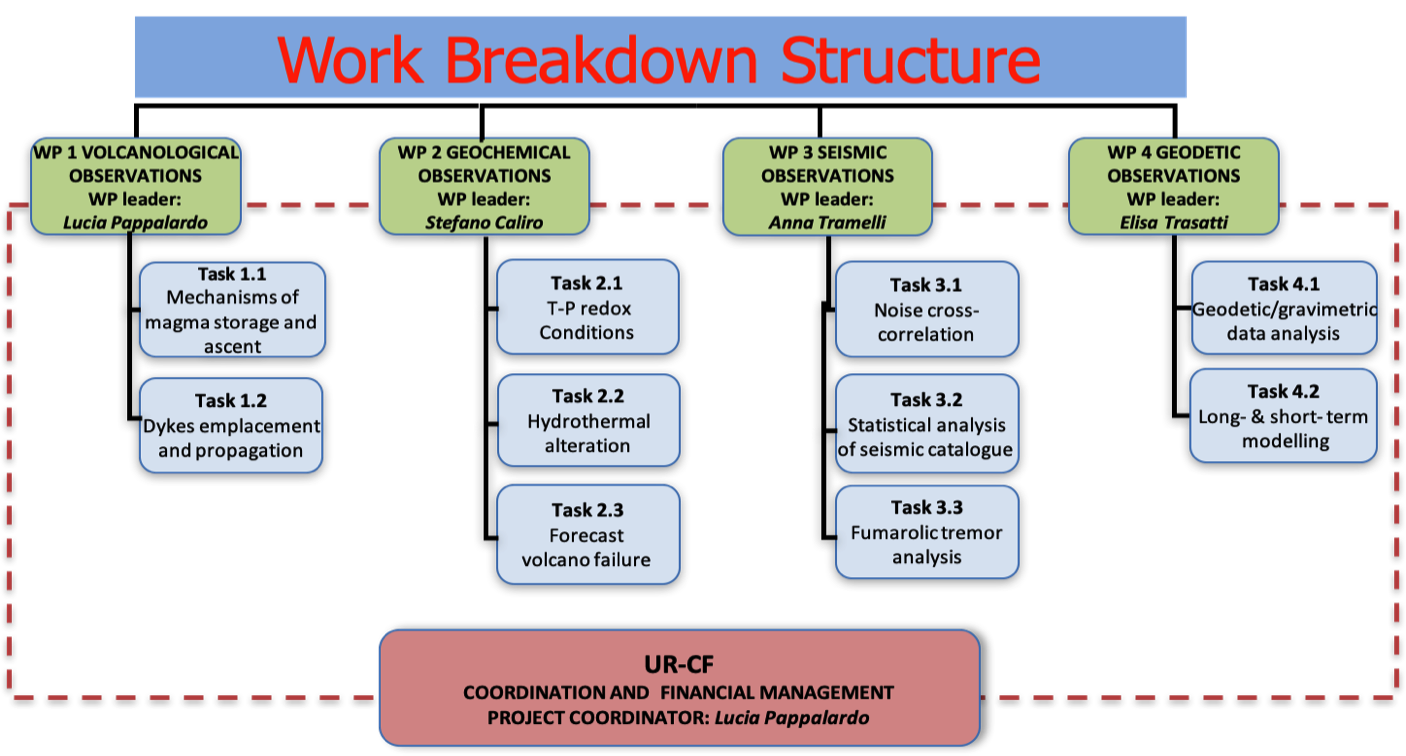 Methods and objectives of each WP and main
Methods and objectives of each WP and mainperspectives of the project.

Work Breakdown Structure of the LOVE-CF project
The LOVE-CF project relies on the following multidisciplinary topics:
a) integration of structural, volcanological and petrological (geochemical and textural) data from representative past eruptions with results of decompression and phase-equilibria experiments as well as numerical models of conduit dynamics and magmatic dyke propagation;
b) innovative geochemical (new redox gas species and CH4 isotopes), minero-petrological (alteration products) and seismic (fumarolic tremor) measurements at the crucial “Solfatara-Pisciarelli” hydrothermal site, as well as geochemical characterization of submarine emissions in
the area of “Secca delle Fumose” in the Gulf of Pozzuoli which until now has been poorly-explored;
c) novel multi-parametrical statistical analysis and investigations of seismic, geochemical and geophysical records collected (both on land and offshore) in the last decades and in the recent period of unrest, strengthened by geological observations and advanced numerical modeling.
d)comprehensive analysis of surface deformations from historical data (since 35 BC) to modern techniques (both in-situ and remote sensing), and related modelling to disclose the active plumbing system and the relationship among the different sources of deformation throughout the decades and centuries.
The main objectives of the project are:
- assessment of eruptible magma storage conditions and eruption trigger factors (e.g. magma volume, depth, temperature, volatile content, residence time, etc) and syn-eruptive magma ascent processes (e.g. magma intrusion and degassing processes and timescale, evolution of magma rheology, depth and mechanism of fragmentation, etc) during the history of the caldera and its current state;
- evaluation of the nature (magmatic or not magmatic) of volcanic unrests and definition of the evolution of the associated geochemical and geophysical observables;
- evaluation of the current activity of the caldera and its possible evolution towards critical conditions and then to an eruption;
- assessment of possible correlation between timescale and nature of precursory phenomena with magnitude of the potential impending eruption;
- improvement of INGV monitoring activities, by introducing, developing and evaluating new geochemical (e.g. light hydrocarbons) and geophysical (e.g. fumarolic tremor) observables, that can act as more selective indicators of unrest sources, also intensifying observations at poorly-explored locations (e.g. offshore).
